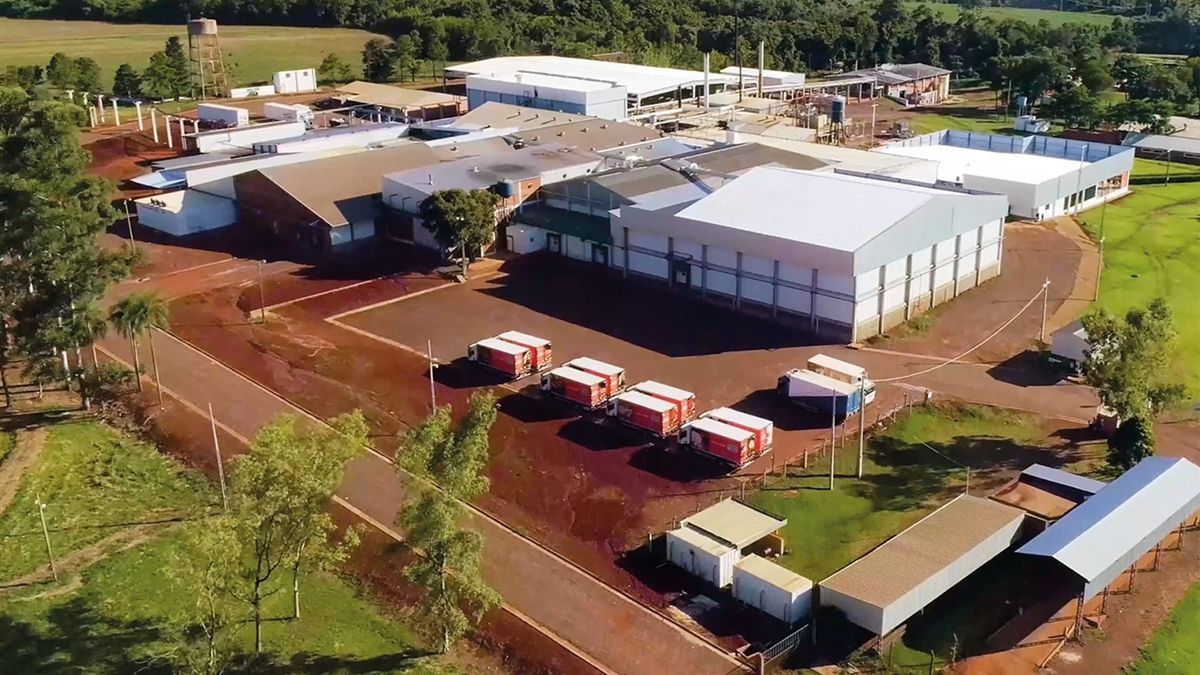For several years, Paraguay was almost only recognized as an agricultural country, with soybeans as an emblem of its production, and to a lesser extent as a livestock country with vaccine production. Today, it is positioned on the global map of animal proteins With a different bet: high quality swine meat. This sector, It is in a full industrial process that begins to attract the attention of the Asian market.
“We are in the right place: we have the land, water, grain and people”he states Marta Marecorepresentative of institutional relations of the Upisa refrigerator, whose industrial plant is in the department of Itapúa, to the south of the country. Mareco details how Paraguay, supported by an integrated productive chain and with investments in genetics, biosafety and industrialization, is managing to make the exporting agricultural producer’s leap of this animal protein.
Asia in the sights
Taiwanmarket enabled for this sector since 2022, currently represents more than three quarters of pork exports, exactly 77% last year. Data published by the Central Bank of Paraguay (BCP), realize that at the end of 2024, the country exported to this destination flesh for a value of US $ 28.8 million, double that in 2023. This was due to the sale of about 9,100 tons, which implied an interannual increase of almost 90% in physical volume.
In fact, recently, Taiwan announced the implementation of zero tariff for Paraguaya meata measure that denotes the promising future that has this commercial relationship, being Paraguay one of the only countries with diplomatic activity in Taipei.
In July, a Paraguayan business delegation will visit the region to open its way in new destinations. “First they will be in Taipei, then in Singapore and the Philippines, which has already passed the health inspection satisfactorily,” he says Mareco.
Singapore It appears as a strategic partner. Beyond its internal consumption, it works as a logistics and commercial hub for all Southeast Asia. “From there it is even re-exported to Japan. It is a modern city-state, with a very favorable commercial opening and a per capita income of $ 90,000,” explains Mareco.
The Paraguayan strategy contemplates not only exporting frozen cuts, but also moving towards products with greater added value, such as canned and processed foods. “Singapuran businessmen are interested in investing directly in Paraguay. Investments do not stop,” says Mareco.
Integrated value chain
Pigs are fed at 80% corn and 20% soybeans and minerals, which results in meat considered premium in their destination markets. Genetics, imported from Denmark and France, differentiates Paraguay from competitors such as Brazil.
The transformation of this chain began in the late 90s, when a project with Japanese support identified Itapúa as a balanced production pole. “We decided to transform vegetable protein into animal protein”recalls Mareco. The effort has paid fruits: Paraguay already produces swine meat throughout the year, which allowed to get out of the seasonal character that historically limited its internal consumption.
In the domestic market, pork has also gained ground. Traditionally consumed only during Holy Week and end of the year parties, today it reaches 13 kilos per capita per year, a figure unthinkable two decades ago as the executive recounts. “Before it was a secondary product against vaccine meat. Today, thanks to quality and availability, the pig has another image,” says Mareco.
This change of perception also responds to the growth of the industry. New cuts, machinery imported from Germany to meet market demandsand a union strategy that makes visible the achievements of the sector are part of the process.
Although Upisa was the first refrigerator to open the International Market for Paraguayan Beat, information published by the National Animal Health and Health Service (Senacsa), realizes that since 2024 the Pirayú refrigerator also already has enabling to export to countries such as Georgia and Costa del Marfil, and also Brazil, according to information on its website.
In this sense, Senacsa points out that in 2024, slaughter of about 393,644 pork heads were recorded, 20% more than the previous year. The industry is going through an expansion period, not only in terms of volume, but also in the diversification of its offer. To the traditional sausages are now added packaged products such as the spine and packaged matters, thus expanding the variety available in the market.
Internal level, there are few industries that are generating added value through pork, especially for the category of sausages. An example of this is Embutidos Franz, which operates since 2010 and currently has the ability to generate about 600 tons per month of that product, according to its own website.
Within that framework, the Paraguayan Chamber of Pig Industries and Derivatives (Capaipod) was recently created, composed of several of the country’s refrigerators dedicated to this protein. In this guild, in addition to the Upisa and Pirayú exporters, companies are already grouped at the local market such as Agricultural Itabo (La Porchina), Mutti, Studenko, and the Chortitzer Production Cooperative, which have the potential to sell abroad as well, eventually.
This aggression of companies in the industrial sector pigs, as well as the advancement of the slaughter and exports of the product, speak of the process through which the sector passes and the expectations towards the future. Mareco, who is the head of the guild, says that the agenda includes issues such as work for the integral formalization of processes and the standardization of types of cuts.
A regional development commitment
According to Mareco, some 50,000 Paraguayan families currently depend on swine production. “This model transforms territories. It is a way to get out of poverty, because it generates employment, added value and leaves wealth in the country,” he says. Swine production is intensive: cycles are short (about 110 days) but require important investments in biosafety and technology.
The challenges are not few. Land registration, improvement in bureaucratic processes for export, and the need for industries to adopt international standards such as ISO are part of the agenda.
While Latin America awakens as the new global swine production center, with countries like Colombia and Ecuador also growing, Paraguay advances with a firm step. With consolidated Taiwan, Singapore as the next scale and the Philippines in the process, the Paraguayan pig begins to take a place at the Asian tables.
Source: Ambito




